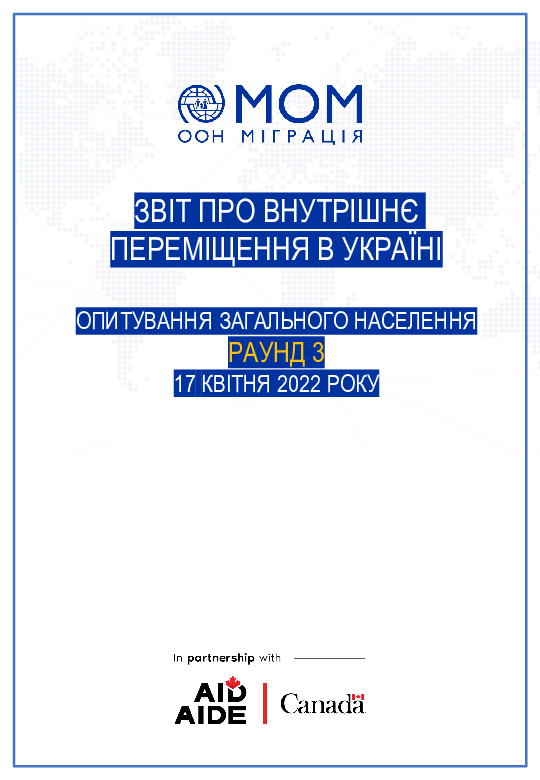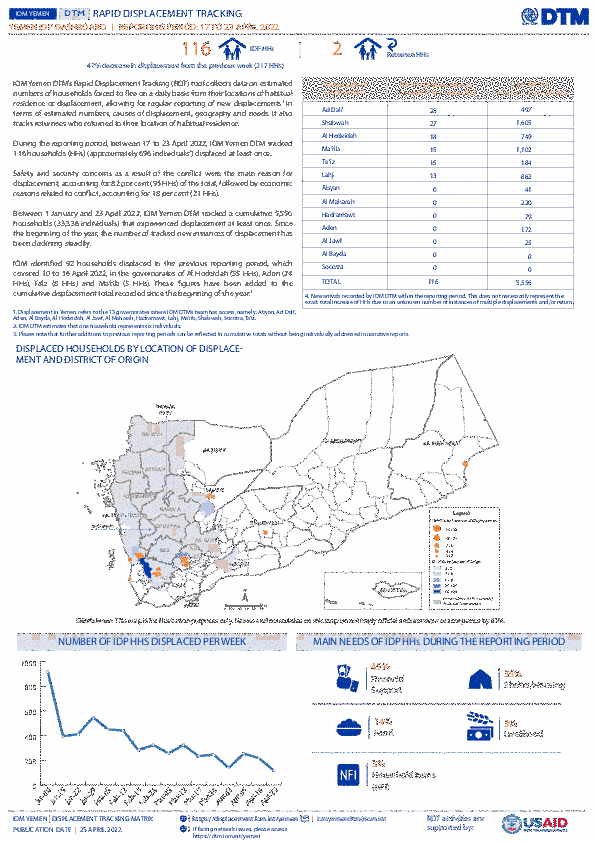-
Countries
-
Data and Analysis
-
Special Focus
-
Crisis Responses

Contact
DTM Thailand, dtmthailand@iom.int
Language
English
Location
Thailand
Period Covered
Nov 11 2021
Feb 13 2022
Activity
- Survey
- Community Perception
Thailand has been fighting COVID-19 longer than any country in the world except China – after isolating the virus on January 13, 2020. Thailand’s public health priorities in 2020 focused on limiting the spread of COVID-19, reducing morbidity and mortality associated with the virus and maintaining essential health services for the population. Vaccination offers Thailand another mechanism to combat COVID-19. The Ministry of Public Health (MoPH) is planning to immunize between 50-80% of persons living in Thailand against COVID-19 in 2021. This is planned out in phases as doses of vaccine will initially be limited. Healthcare workers, other essential workers, the elderly and those with chronic medical conditions have been prioritized for vaccination. Clear and accurate communications around the benefits and safety of the vaccine will be critical as immunization is extended to the general population, including migrant populations. Monitoring the progress of COVID-19 immunization will also be important to support policy and safety. This project aims to protect the health of people living in Thailand by strengthening communications for and monitoring of mass immunization campaigns against COVID-19.
Contact
DTM Yemen, iomyemendtm@iom.int
Location
Yemen
Activity
- Event Tracking
- Mobility Tracking
Period Covered
Apr 17 2022 -Apr 23 2022
From 1 January to 23 April 2022, IOM Yemen DTM tracked 5,556 households (HH) (33,336 Individuals) who experienced displacement at least once.
Between 17 and 23 April 2022, IOM Yemen DTM tracked 116 households (696 individuals) displaced at least once. The majority of people moved into/within the following governorates and districts:
The majority of people moved from the following governorates and districts:
Between 17 and 23 April 2022, IOM Yemen DTM tracked 116 households (696 individuals) displaced at least once. The majority of people moved into/within the following governorates and districts:
- Ad Dali (28 HHs) – Ad Dali (17 HHs), Qatabah (11 HHs) districts. Most displacements in the governorate originated from Ad Dali and Hajjah.
- Al Hodeidah (27 HHs) – Hays (21 HHs), Al Khukhah (6 HHs) districts. Most displacements in the governorate originated from Taiz and Al Hodeidah.
- Taiz (18 HHs) – Al Mudhaffar (6 HHs), Jabal Habashi (4 HHs), Al Misrakh (3 HHs) districts. Most displacements in the governorate originated from Taiz and Al Hodeidah.
The majority of people moved from the following governorates and districts:
- Taiz (34 HHs) – Maqbanah (20 HHs), Jabal Habashi (4 HHs), At Taiziyah (2 HHs) districts.
- Al Hodeidah (22 HHs) – Hays (6 HHs), Al Jarrahi (5 HHs), Zabid (4 HHs) districts.
- Ibb (3 HHs) – Ibb (3 HHs), Badan (3 HHs), As Saiyani (1 HHs) districts.
Population Groups
Survey Methodology
Unit of Analysis Or Observation
Type of Survey or Assessment
Keywords
Geographical Scope
Administrative boundaries with available data
The current dataset covers the following administrative boundaries

Contact
DTMUkraine@iom.int
Language
Ukrainian
Location
Ukraine
Period Covered
Apr 11 2022
Apr 17 2022
Activity
- Survey
Війна в Україні, яка розпочалася 24 лютого 2022 року, спричинила безпрецедентну гуманітарну кризу, що охопила всі області країни. У період з 11 квітня по 17 квітня Міжнародна організація з міграції (МОМ) провела третій раунд репрезентативного експрес-оцінювання загального населення України для збору інформації стосовно потоків внутрішнього переміщення та мобільності, а також для оцінювання місцевих потреб. Це оцінювання загального населення слугує первинним джерелом для виявлення сфер із високими гуманітарними потребами та визначення цільових заходів реагування для надання допомоги населенню, що постраждало від війни. Географічне охоплення цього оцінювання покриває всю територію України, усі п’ять макрорегіонів (захід, схід, північ, центр, південь та місто Київ), за винятком Кримського півострова. Опитування загального населення було проведено шляхом набору випадкових телефонних номерів, завдяки чому було анонімно опитано 2 000 унікальних респондентів віком від 18 років із використанням методу автоматизованого телефонного опитування (CATI). Оцінка спирається на дані про населення Фонду народонаселення ООН (UNFPA), які гуманітарна спільнота розглядає як базове значення для чисельності населення в Україні. Особи, які нині перебувають за межами України, під опитування не потрапили. Докладніше про метод і обмеження, у тому числі про визначення МОМ терміна «внутрішньо переміщені особи» для цілей цього оцінювання, див. на с. 11.
Цей звіт також доступний англійською мовою

Contact
DTM Yemen, iomyemendtm@iom.int
Language
English
Location
Yemen
Period Covered
Apr 17 2022
Apr 23 2022
Activity
- Mobility Tracking
IOM Yemen DTM’s Rapid Displacement Tracking (RDT) tool collects data on estimated numbers of households forced to flee on a daily basis from their locations of origin or displacement, allowing for regular reporting of new displacements in terms of estimated numbers, geography, and needs. It also tracks returnees who returned to their location of origin.
From 1 January to 23 April 2022, IOM Yemen DTM tracked 5,556 households (HH) (33,336 Individuals) who experienced displacement at least once.
Between 17 and 23 April 2022, IOM Yemen DTM tracked 116 households (696 individuals) displaced at least once. The majority of people moved into/within the following governorates and districts:
- Ad Dali (28 HHs) – Ad Dali (17 HHs), Qatabah (11 HHs) districts. Most displacements in the governorate originated from Ad Dali and Hajjah.
- Al Hodeidah (27 HHs) – Hays (21 HHs), Al Khukhah (6 HHs) districts. Most displacements in the governorate originated from Taiz and Al Hodeidah.
- Taiz (18 HHs) – Al Mudhaffar (6 HHs), Jabal Habashi (4 HHs), Al Misrakh (3 HHs) districts. Most displacements in the governorate originated from Taiz and Al Hodeidah.
The majority of people moved from the following governorates and districts:
- Taiz (34 HHs) – Maqbanah (20 HHs), Jabal Habashi (4 HHs), At Taiziyah (2 HHs) districts.
- Al Hodeidah (22 HHs) – Hays (6 HHs), Al Jarrahi (5 HHs), Zabid (4 HHs) districts.
- Ibb (3 HHs) – Ibb (3 HHs), Badan (3 HHs), As Saiyani (1 HHs) districts.

Contact
iomisbdtmremapteam@iom.int
Language
English
Location
Pakistan
Period Covered
Mar 12 2022
Mar 25 2022
Activity
- Flow Monitoring
IOM Pakistan collects data on the outflows of undocumented Afghan migrants at the Torkham and Chaman border crossing points in an effort to better understand the migration movements of undocumented Afghan migrants returning to Afghanistan from Pakistan. This exercise is part of the European Union funded project “Displacement Tracking Matrix Regional Evidence for Migration Analysis and Policy (DTM REMAP)”. From 12 to 25 March 2022, 6,671 undocumented Afghan migrants returned to Afghanistan, including 1,139 through the Torkham border point and 5,532 through the Chaman border point. During the reporting period, border authorities facilitated the return of 98 individuals due to the lack of legal documentation to remain in Pakistan. Therefore, information concerning these 98 individuals is not included in the report analysis.

Contact
DTMColombia@iom.int
Language
English
Location
Colombia
Period Covered
Nov 01 2021
Nov 30 2021
Activity
- Survey
This characterization was carried out in order to learn the conditions, needs and characteristics of the response offered in the accommodation sites in Colombia, as an input to strengthen intersectoral care in these key spaces for the response to refugees and migrants, in light of the of the formulation of the Refugee and Migrants Response Plan - RMRP 2022.
The data collection used during this assessment corresponds to DTM and the development of this was carried out with Interagency Group on Mixed Migration Flows (GIFMM), with the support of the International Organization for Migration IOM.

Contact
oimguineedtm@iom.int
Language
French
Location
Guinea
Period Covered
Mar 01 2022
Mar 31 2022
Activity
- Flow Monitoring Survey
- Flow Monitoring
La Guinee est un pays qui temoigne de flux migratoires importants, tant comme pays d'origine de migrants que comme pays de destination de migrants à la recherche d'opportunités économiques. Le suivi des flux de populations (Flow Monitoring, FM) est un exercice qui vise à identifier les zones de forte mobilité interne et transfrontalière à fin de mieux comprendre les caractéristiques des flux migratoires. Ce rapport présente les données obtenues pendant le mois de mars 2022 au niveau des FMP de Boundoufourdou dans la préfecture de Koundara au Nord du pays et de Nafadji et Kourémalé, tous deux situés dans la préfecture de Siguiri au Nord-Est de la Guinée. Ces données sont collectées lors de l’enregistrement des flux observés traversant les FMP guinéens au cours du mois de mars 2022.

Contact
DTM Europe, DTMMediterranean@iom.int
Language
English
Location
Republic of Moldova
Period Covered
Feb 24 2022
Apr 22 2022
Activity
- Flow Monitoring
- Migrants presence
Since 24 February 2022, an increasing number of persons fleeing from Ukraine to the neighbouring countries has been observed, as a result of the war in Ukraine.
This report is based on cumulative and daily registrations by the General Inspectorate for Border Police (GIBP) of Ukrainian refugees and third-country nationals (TCNs) entering from Ukraine the territory of the Republic of Moldova at all Border Crossing Points (BCPs), since 24 February 2022, and out them, on the numbers of those who exited the country towards Romania, towards Ukraine and by flight, as well as on number of those who are still present in the Republic of Moldova.

Contact
DTM Mali, DTMMali@iom.int
Language
English
Location
Mali
Period Covered
Mar 01 2022
Mar 31 2022
Activity
- Survey
- Flow Monitoring Survey
- Flow Monitoring
In order to gain a better understanding of mobility flows and trends, the International Organization for Migration (IOM) has implemented the Displacement Tracking Matrix’s Flow Monitoring (FM) tool at key transit points across the region. Flow Monitoring activities are conducted in close cooperation with national and local authorities as well as local partners. The Flow Monitoring tool consists of two main components: the Flow Monitoring Registry (FMR), which captures key data on the volume, origin, destination and mode of travel of mobility flows, and the Flow Monitoring Survey (FMS), individual surveys conducted with travellers to gather detailed information about the profiles, migration experience and intentions of migrants. Through these activities, the Flow Monitoring tool collects data on migration flows and trends, traveller profiles, migration journeys, and intentions of migrants, so as to obtain a better understanding of mobility.
In Mali, DTM conducts Flow Monitoring activities at seven Flow Monitoring Points (FMPs) located across six regions, in order to foster a better understanding of the numbers, trends, profiles, and journeys of migration flows crossing these points.
This reports presents data collected through the Flow Monitoring Registry in March 2022.

